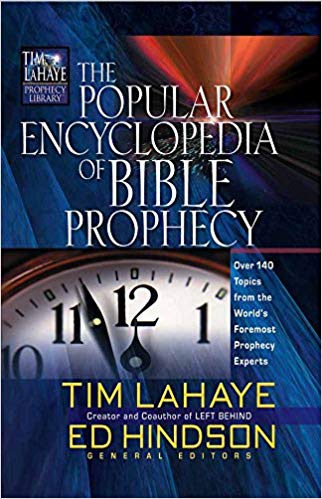ABOMINATION OF DESOLATION PART 1

THE POPULAR ENCYCLOPEDIA OF BIBLE PROPHECY
The Abomination Of Desolation Part 1
The phrases abomination of desolation, desolating abomination, and abomination that makes desolate refer to violations of the ritual
purity of the Jewish Temple in Jerusalem. They translate the Hebrew term shiqqutz(im) meshomem and the Greek term bdelugma tes eremoseos, and they appear in prophecies about the desecration and defilement of the Temple in both a.d. 70 and at the end of the age.
OLD TESTAMENT TERMS
In the Old Testament, the phrase occurs only in Daniel (9:27; 11:31; 12:11). It conveys the feeling of horror that God’s people feel when they witness criminal and barbaric acts of idolatry. These acts rendered the Temple ritually unfit for the worship and service of God. Daniel laments the foreign domination of Jerusalem and desolation of the Temple: “How
long will the vision about the regular sacrifice apply, while the transgression causes horror, so as to allow both the holy place and the host
to be trampled?” (Daniel 8:13 nasb). In Daniel 12:11 we read of a foreign invader abolishing the regular sacrifice and substituting “an
abomination of desolation.” The word “abomination” shows how appalled Daniel is at the forcible intrusion of idolatry into a place of
sanctity in order to cause defilement.
NEW TESTAMENT TERMS
In the New Testament, the phrase appears only in the Olivet Discourse (Matthew 24:15; Mark 13:14), where Jesus has Daniel’s prophecy
in mind. The term eremos (“desolation”) does appear in Luke 21:20, but it does not refer to the technical phrase and describes the condition
of Jerusalem in general, not the Temple in particular. Jesus uses the same word in Matthew 23:38, and even though He is referring to the Second Temple, He is predicting its destruction (rather than its desecration) and God’s judgment upon it. This is quite distinct from the desecration caused by the abomination of desolation, which results in divine judgment not upon the Temple but upon the one who desecrates it (see Daniel 9:27). Daniel’s and Jesus’ use of the phrase clearly influenced other prophetic scriptures (2 Thessalonians 2:3-4; Revelation 11:1-2). The New Testament uses bdelugma (the Greek word translated “abomination”) four times (Luke 16:15; Revelation 7:4-5; 21:27). The Septuagint (the Greek translation of the Old Testament) uses it 17 times. It comes from a root term that means “to make foul” and “to stink.” Thus it refers to something that makes one feel nauseous, and by implication, something morally abhorrent and detestable. As with the Hebrew meaning in the Old Testament, the New Testament Greek term points particularly to idols or idolatrous practices. The Greek word eremoseos (translated “desolation”) means “to lay waste, make desolate, bring to ruin” (see Matthew 12:25; Luke 11:17; Revelation 17:16; 18:17,19). The Septuagint uses it to describe the desolation of the Land as a result of desecration and exile.
THEOLOGICAL MEANING
In both Hebrew and Greek, the phrase the abomination of desolation is an unusual grammatical construction. The best explanation
for this is the literary and theological linkage of abomination and desolation in the prophetic writings of Jeremiah and Ezekiel.
These texts treat extensively the desecration and defilement of the Temple, and they frequently mention the abominations and desolations
of pagan profanation of the Sanctuary ( Jeremiah 4:1,27; 7:10; 44:22; Ezekiel 5:11,14-15; 7:20) as well as the foreign invaders who will further desecrate and destroy the Temple ( Jeremiah 4:6-8; Ezekiel 6:11; 7:20-23). Jeremiah 44:22 in particular states that Israel’s abominations have caused the desolation of the Land and made it “an object of horror” (compare Ezekiel 5:11,15; 7:20-24; 36:19-21). This brief survey shows that the Israelites
considered acts of ritual impurity and especially of foreign invasion of the Temple as ultimate violations of sanctity and as a sign of judgment. The Jews were extremely careful to
prevent such acts and even built a protective fence around the Second Temple. It included a warning inscription promising death to any
non-Israelite who passed beyond it into the court of the Israelites. The New Testament (Acts 21:27-28) records the violent opposition of a Jewish crowd who believed Paul had taken a Gentile proselyte (Trophimus) into the Temple to offer sacrifice. They accused Paul of “defiling the holy place” (the Temple). With this background, we can understand why the future act of desecration by the abomination of desolation is the climax of Daniel’s seventieth week and signals the intensification of God’s wrath in the second half of the Tribulation
(Matthew 24:15-21; Mark 13:14-19).

